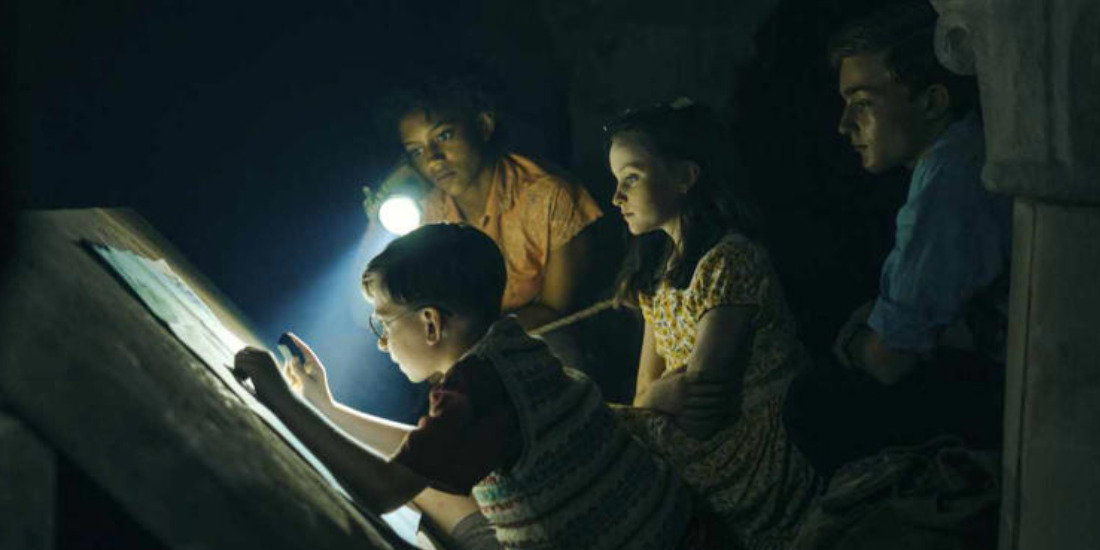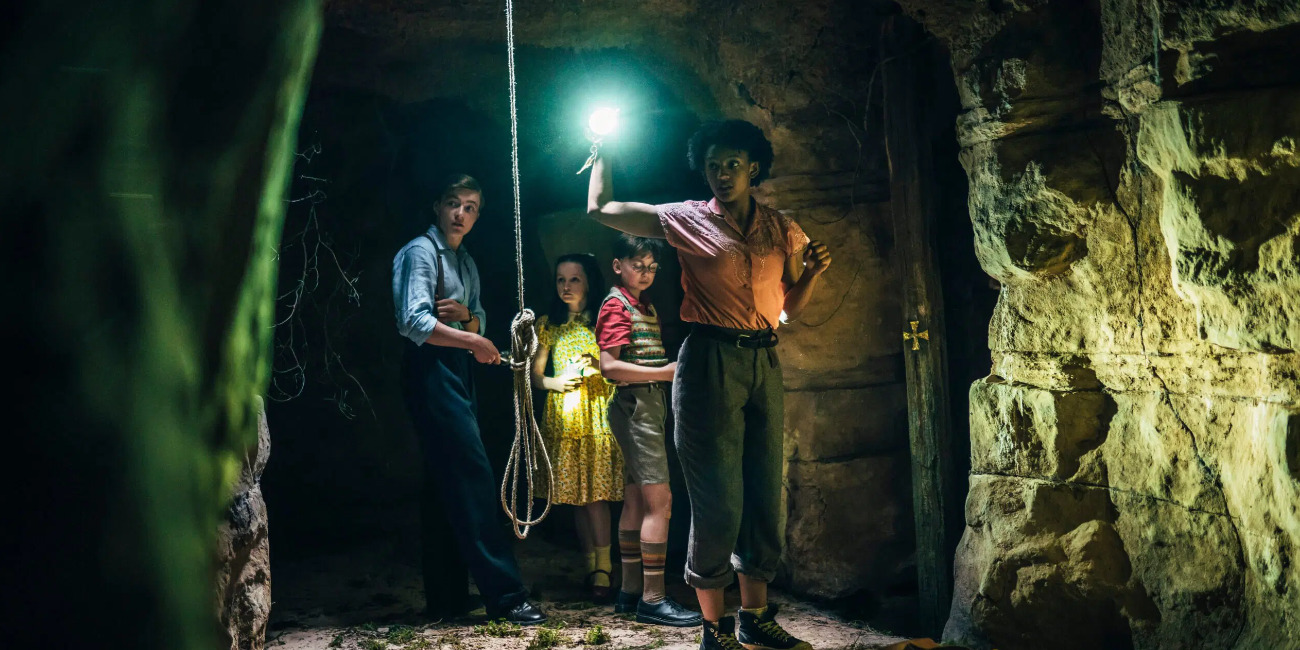Hulu’s ‘The Famous Five,’ charting numerous mystery-driven adventures helmed by four kids and their spirited dog, features many myths of the past to add a sense of thrill to the storylines. The first mystery George finds herself undertaking, alongside her visiting cousins, Dick, Anne, and Julian, unfolds on her family’s inherited island, Kirrin, which is rumored to be bearing a great curse and great treasure within. As the kids’ investigation progresses, it unravels an entire plot dating back hundreds of years to the time of the Crusades and the Knights Templar.
Thus, as the mystery reveals more about William Marshall, the Templar Knight whose past is interconnected to Kirrin’s mysteries, details about the knighthood and their involvement with a Fountain of Wisdom emerge. However, does the show’s portrayal of these historical stories have any basis in real history? SPOILERS AHEAD!
The Knights Templar: A Frequent Source For Historical Fiction
The Knights Templar, a religious military organization formed during the Crusades of the late 11th century, has been a treasure trove of inspiration for historical fiction and legends for a long time. In fact, the organization was feeding myths and stories about itself even before its ultimate destruction. Initially, the Templars were founded to protect the Christian pilgrims who were traveling into the Holy Land of Jerusalem. Unlike the Knights of the Middle Ages, these religiously devout Knights Templar swore to virtues of poverty, chastity, and such, committed to serving the Christian cause.

The Templars sported significant influence during the Christians-Muslims conflict in the Crusades. Eventually, by the 12th century, the Knights Templar assumed a militaristic role in the Holy Land, overtaking banking duties across both Europe and the Middle East. Consequently, with time, the Knights began amassing prominent wealth, including land on both continents. Eventually, as the early 1300s brought the end of the Knights Templar after the French King Philip IV ordered the knighthood’s destruction, tales of the lost Templar treasure began to spread.
Myths about secret caves, coveted holy relics— such as the Holy Grail, Treasure of Solomon, and the Ark of the Covenant— and several other hidden treasures belonging to the extinct order came into cultural circulation. Numerous storytelling mediums over time have utilized this idea of a Templar Treasure to craft plot lines, including the 2004 film, ‘National Treasure,’ the 2017 show, ‘Knightfall,’ and the ‘Assassin’s Creed’ video games. As such, ‘The Famous Five’s’ utilization of the same trope arrives as an addition to a long list of predecessors.
In ‘The Famous Five,’ a particular fictionalized Knight Templar, William Marshall, becomes the center of attention as George and her cousins investigate the rumored treasure Marshall and his crew brought to Kirrin Island from their various plunders across the Middle East. Although the storyline equips the historical relevance of the Templars, the details surrounding Marshall and his crew remain entirely fictitious and confined to the show’s narrative. Therefore, while the Knights Templar was a real historical knighthood, the details of its inclusion in the show’s narrative are fictional.
The Mythical Fountain of Wisdom
Unlike The Knights Templar— a historical cornerstone— the fountain of wisdom, which rounds off Kirrin Island’s mystery, possesses more tumultuous roots in reality. In the show, the narrative reveals the fountain of wisdom as the ultimate treasure, looted from the Middle East, that resides within the Templars’ hidden underground caves. As the name suggests, the fountain has magical waters that grant the drinker an endless source of knowledge and wisdom.

However, the catch is that the knowledge that the fountain bestows upon one is really an endless insight into the future—from the wonders of technology to the horrors of upcoming wars. As a result, the relic becomes both the treasure and the curse of Kirrin Island. While the idea of a fountain of wisdom often floats across real-life myths, attaching it to a particular spot in the Middle East remains difficult.
Famously, the fountain of wisdom legend can be found in the Pierian Spring from Greek Mythology. Sacred to the Muses, the spring was believed to be a source of knowledge in both artistic and scientific fields. Nevertheless, as per the mythology, the spring was situated in Macedonia, departing it as a possible inspiration for the show’s Middle Eastern fountain. Likewise, another notable addition to the conversation comes from Norse Mythology, where Mímisbrunnr stood as a well of knowledge.
Mímisbrunnr, located beneath Yggdrasill, the world tree’s roots, the well was said to contain Odin’s eye, which bestowed endless knowledge and wisdom to any individual who drank its waters. Nonetheless, this well’s origins in the Nordic kingdoms dispel the myth’s connections to the fountain of wisdom in ‘The Famous Five.’ Thus, ultimately, the fountain of wisdom remains a diverse legend with numerous counterparts in different cultures. Yet, the one depicted in the show is confined to the borders of its fictional narrative.
Read More: Is The Kirrin an Actual Island?


You must be logged in to post a comment.